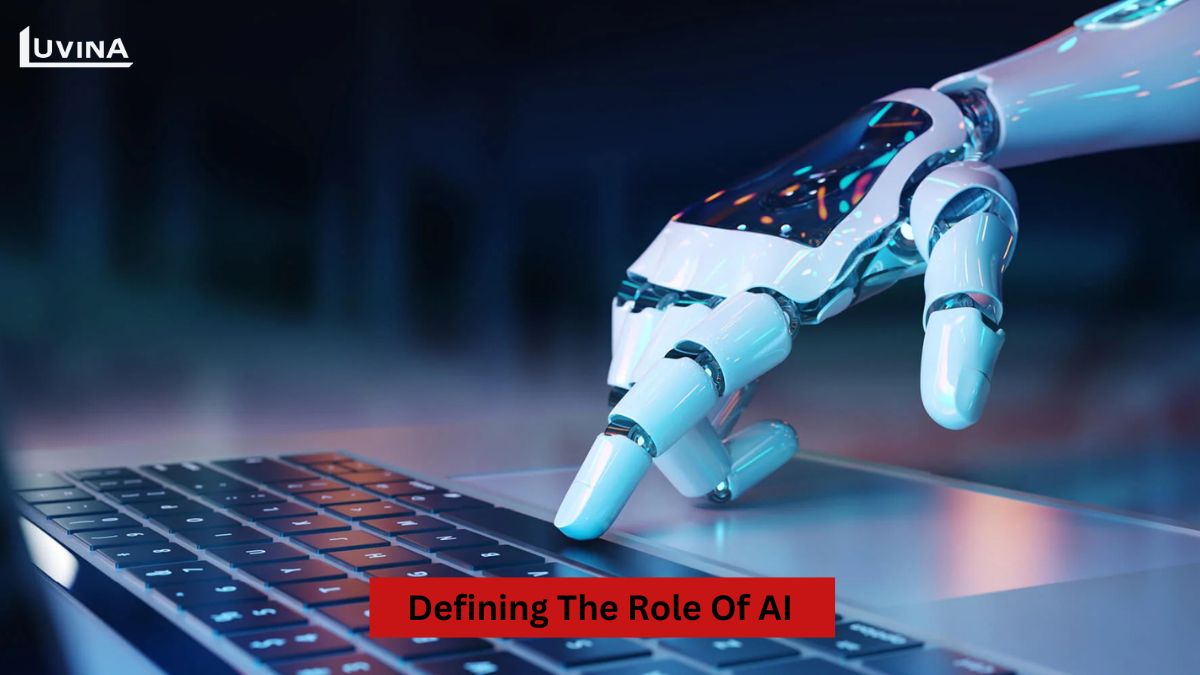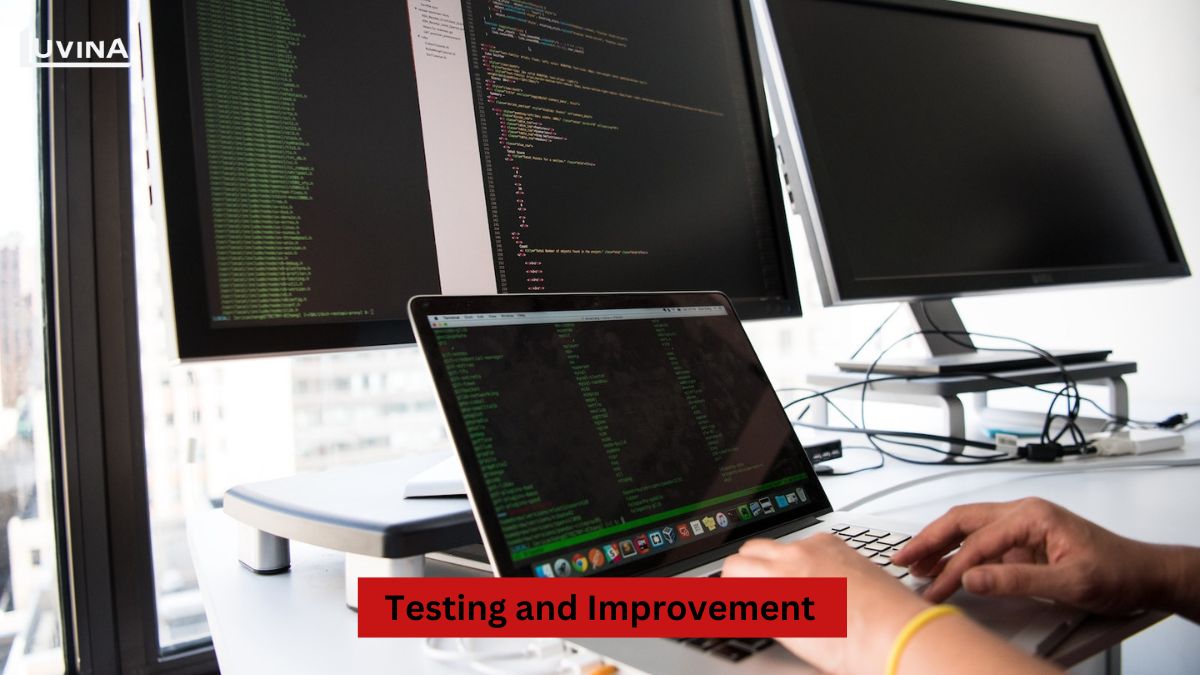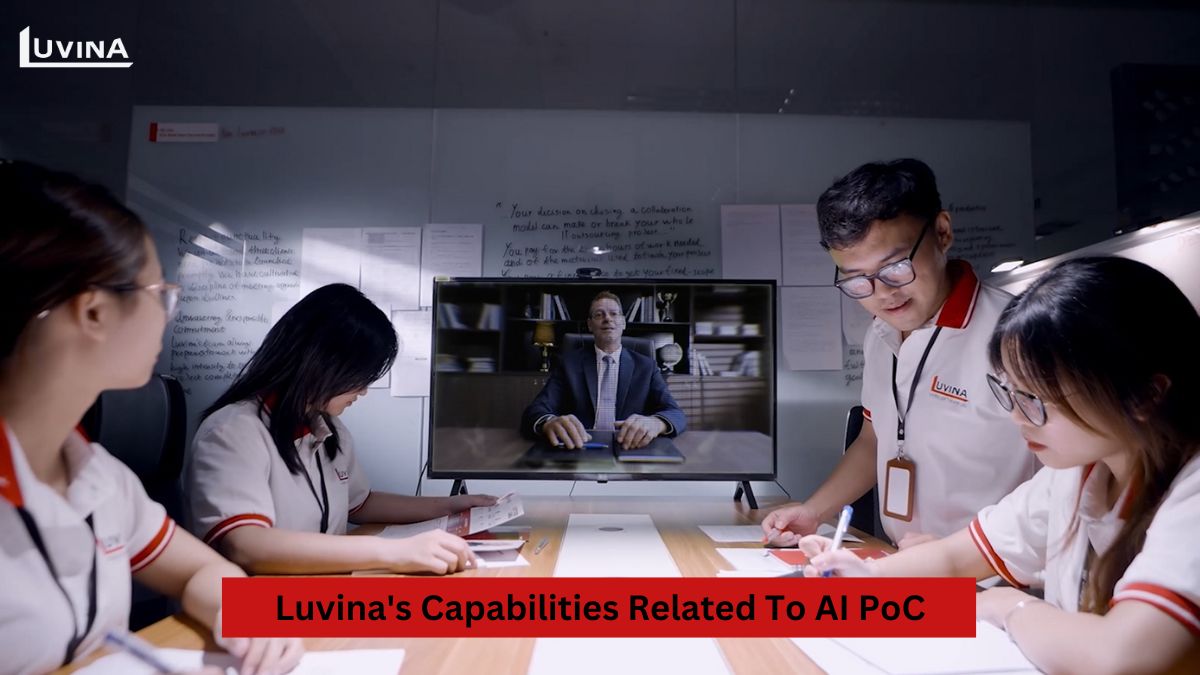With AI now permeating every aspect of our lives, it is little wonder that for businesses, AI has ceased being a buzzword from the future and has instead become a competitive imperative. Yet, all-powerful as it is, AI is not something that fits every description, and a headlong dive into its complete implementation can be a risk. It is here that AI POC comes to the fore.
An AI proof of concept helps the business low-risk test a particular AI model before full deployment. Below, we will dive into what AI POC is, its benefits, how to implement it, and give some real-life examples where Luvina has applied the approach to help you understand this strategic approach better.
What is AI Proof of Concept?
An AI Proof of Concept (AI POC) is a small-scale, low-risk test designed to confirm, check the feasibility, and evaluate the impact of an AI solution in specific use cases, assess the potential benefits of the proposed solution, and identify potential challenges or limitations. It can be considered a small project within a larger AI initiative.

Unlike large-scale AI deployment across entire systems or operations, POC AI tests a limited aspect of AI on a smaller and more controlled scale. This is considered a strategic move to help businesses protect themselves from potential risks when deploying AI widely. POC AI is proposed and tested in a controlled environment to see how the solution performs and whether the solution meets the desired objectives. After that, the results of POC AI will be reported and used for the next steps in developing and deploying the solution.
Why do you need to conduct AI POC?
There are many compelling reasons for you to start an AI POC today:
- Validate the feasibility of the solution: An AI POC helps you verify whether the proposed solution can effectively solve a problem before you invest significant resources into the project.
- Gain valuable insights: A POC AI will provide valuable data and insights about the solution’s performance, data requirements, and skill sets needed for future projects. It will also help you refine and optimize the solution for real-world implementation.
- Minimize risks: One of the greatest benefits of an AI Proof of Concept is that it helps you identify potential challenges early on, allowing you to minimize risks associated with large-scale projects. Identifying these potential challenges will save you considerable resources and costs when implementing large-scale AI projects, enabling you to fail faster and better. Especially, if the development team encounters insurmountable challenges during the AI POC, stakeholders will have time to reassess and adjust the approach to achieve the same goal through different methods. Moreover, an AI POC also helps you reduce business risks, as it allows you to test creative ideas step by step instead of diving straight into a long-term project.
- Showcase potential: A successful POC AI is seen as a case study demonstrating the value of AI to stakeholders, persuading them, and ensuring their buy-in.
How the AI PoC development process
To help you successfully develop an AI POC, we propose the following 5-step process:
1. Determine what problems you want to solve with AI
One of the most important aspects of developing an AI POC is to define the goals you want to achieve with AI. The chosen use case must bring significant value to your business. If you have not yet defined the objectives, we suggest that you first look at how other companies in your industry are using AI solutions. After reviewing competitors to create a list of goals, you can start asking a few questions to identify the best opportunities for your project at this moment. For example:
- – Is the problem you want to solve specific?
- – Can you evaluate the results to determine success?
- – Have you tried solving this problem with other technologies?
- – Do you have enough talent and resources to support the project to completion?
- – How will the project impact your business?
- – What are the potential risks and limitations of using AI to solve this problem?

You can identify the issues you want to address with AI with your internal tech team or contact service providers to help identify the urgent issues your business is facing and decide if AI is the right technology.
2. Data selection and preparation
Any AI and machine learning initiative requires data, and the quality and completeness of the data will greatly impact the success of an AI Proof of Concept project. To prepare the data, you will need to invest a lot of time in collecting and ensuring the integrity and accuracy of all data to train the model to accurately reflect the problem you’re facing.
You will need to collect data from various sources, clean the data thoroughly, fill in missing information, and structure the data to optimize it for AI. The goal of this step is to provide the AI model with clean and meaningful data to create actionable insights.
3. Designing a model and building an AI PoC
Once the data is prepared, in the next phase, you will begin by choosing the most appropriate AI model based on your business objectives. After selecting the model, you will need to train it. The model will be fine-tuned step by step to learn from the data, continuously improving its performance to meet the defined standards.
4. AI PoC Testing and evaluation
The AI POC will be thoroughly evaluated to measure its accuracy, speed, and scalability. Additionally, you will also need to assess the impact of the AI POC on your business. For example, see if the model helps reduce costs, increase operational efficiency, or improve customer satisfaction. Based on all these evaluations, the AI POC model will be fine-tuned and retrained to improve accuracy and reliability.

5. Deployment
This is the final step in the AI POC development process. After the AI POC has been tested and fine-tuned, it will be integrated into your business environment. This process will include embedding the model into your company’s infrastructure, ensuring the solution can process data in real time, generate insights, and contribute to the overall business strategy.
Additionally, during deployment, continuous monitoring and support are extremely important to ensure the model evolves with the changing needs of the business and continues to deliver value over time.
Real-life AI PoC examples
Are you looking for AI POC examples? Below are some POC projects that Luvina has implemented, which will help you better understand the benefits of this approach.
1. POC: Key information extraction from document
Luvina has successfully implemented several AI Proof of Concept examples, one of which is a POC AI project focused on Key Information Extraction from documents, particularly invoices. The goal was to automate the extraction of key details such as company name, address, invoice number, date, and total amount. This solution aimed to streamline invoice processing by reducing manual data entry efforts and improving the efficiency of handling financial documents. The project leveraged PaddleOCR for Optical Character Recognition (OCR) to detect and recognize text from invoice images.
The technology stack for the development of this application included Python, PaddleOCR, and PyTorch, focusing on OCR and extracting information. This was successfully implemented in-house for research purposes, and it processed a set of sample invoices rather well. There is great potential to spread this out to greater applications by increasing the size of the invoice dataset to further train the model.
2. POC: English pronunciation trainer
The pronunciation accuracy assessment system, which helps learners improve their English pronunciation skills, is the other outstanding AI POC project of Luvina. The solution uses speech recognition technology to record the pronunciation of a word and convert it into text. The system then references the Cambridge Dictionary to evaluate pronunciation accuracy. By utilizing Google’s OR-Tools library, Luvina compares the learner’s pronunciation with the reference pronunciation, identifying discrepancies and providing a percentage score along with specific pronunciation errors.
This solution, built with Python and OR tools, has been successfully deployed and consulted for clients. The system is capable of assessing pronunciation for beginners and can be further enhanced to evaluate accents, with options for both American and British English pronunciation assessments.
3. POC: RAG document
One of the AI Proof of Concept examples done by Luvina is the RAG Document processing system. This is used as leverage for large language models such as ChatGPT, Gemini, and others. The idea behind this solution is based on document understanding-summarization and information retrieval for customer needs.
The approach involves vectorizing the document using the LangChain library to convert the document into a vector space, enabling efficient processing and retrieval. For information retrieval, large language models (LLMs) are utilized to extract relevant details from the vectorized documents to answer any specific queries.
This AI POC was successfully deployed internally, with the system’s accuracy depending on the quality of the documents and the LLM model used.
4. POC: OCR handwritten and printed text recognition system
The next notable AI POC project by Luvina is the OCR system for recognizing and extracting characters from images, including handwritten text, to support the process of digitization and data extraction. The solution utilizes Optical Character Recognition (OCR) technology implemented in Python. This project leverages the PaddleOCR and VietOCR libraries to accurately recognize and extract characters from images, including handwritten text.
The AI POC has been successfully implemented internally for research purposes, with clearer images resulting in higher accuracy rates.
How can Luvina help?
Those above-mentioned AI POC projects definitely stand as perfect examples of Luvina’s ability to help businesses harness advanced AI technology for increased leverage in the market. Some of our highlight AI POC development services include:

- LLM Development: Creating a limited language model to demonstrate effectiveness and capabilities for a specific use case. This is an excellent step towards reducing tedious tasks, automating them, and gradually fine-tuning model performance for specific objectives.
- AI Chatbots development service: The prototyping of chatbots to demonstrate their capabilities and advantages in use cases, such as operation automation and customer service support. Chatbots are one of the most popular ways to apply AI in an organization, helping businesses streamline processes and reduce costs.
- Natural Language Processing (NLP): Luvina helps businesses process customer interactions through NLP models and sentiment trend visualization, providing actionable insights and enhancing services with unstructured data.
- Time Series: It helps companies understand how already working software systems operate by using AI in unearthing business opportunities. The use of anomaly detection with AI technology provides forecasts on probable value or future trends, thus enabling businesses to adapt easily to the market.
Having more than 750 IT professionals on board and incorporating strong expertise combined with extensive experience from previous AI POC projects, Luvina promises the best AI Proof of Concept development services. Moreover, we provide 24/7 support for the business, no matter what time zone we are in during the collaboration process. Also, we don’t forget to put security at the fore to make sure that our partners’ data is well-protected at any moment in time.
Final thoughts
Beyond being just an enabling technology, AI POC plays a very significant role in informing the choices that businesses must make. By incorporating AI Proof of Concept into their strategies, businesses can minimize risks for initiatives and maximize their chances of success.
We hope this article has provided you with a clearer understanding of the essence of AI POC, its benefits, and the basic process of developing a POC AI. If you would like further advice on developing an AI POC, feel free to contact Luvina today to speak with our experts and receive tailored, innovative solutions for your business.









Read More From Us?
Sign up for our newsletter
Read More From Us?
Sign up for our newsletter